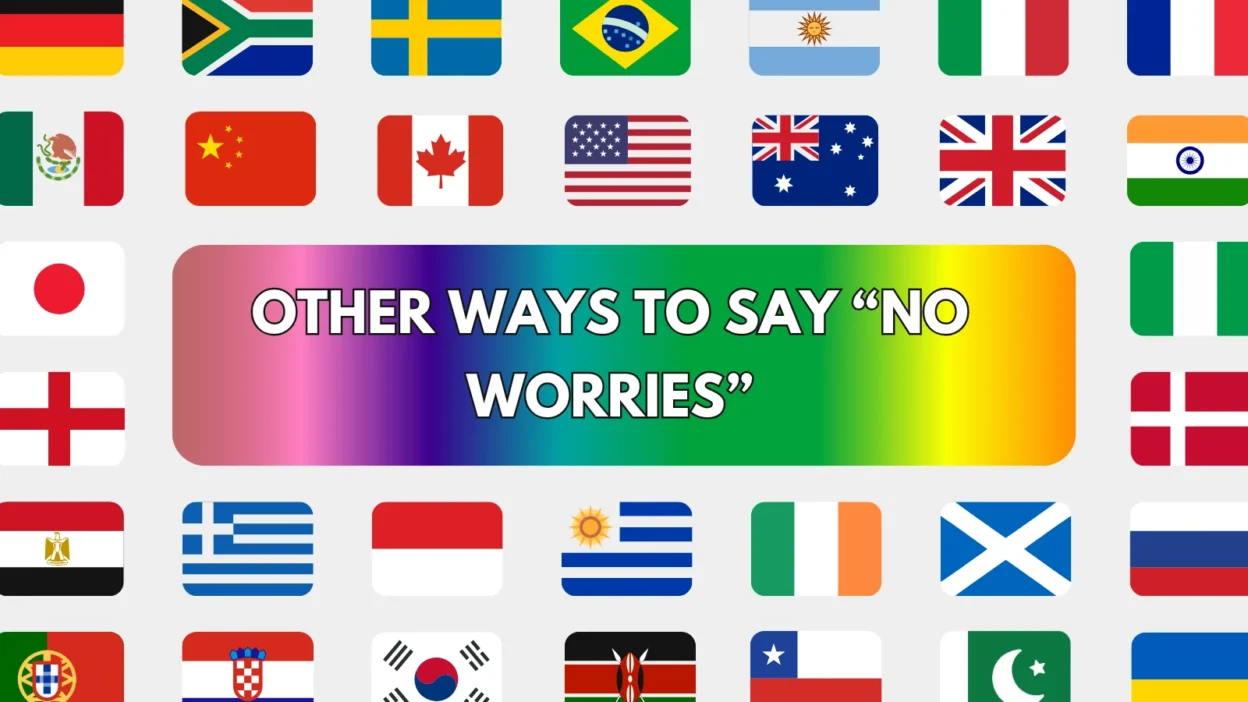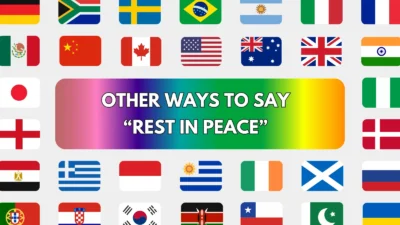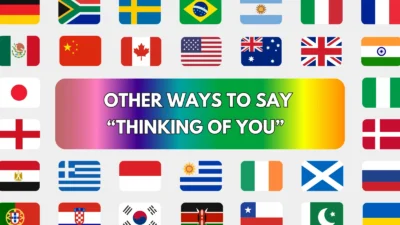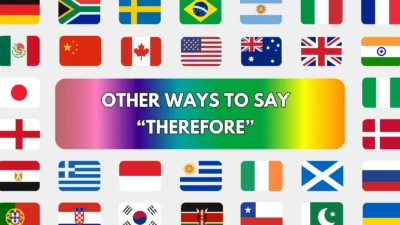The phrase “no worries” is a casual and friendly way to tell someone that everything is fine, there’s no problem, or they don’t need to apologize. It’s especially common in informal communication, particularly in places like Australia, the UK, and casual American English. But repeating the same phrase in every message can become repetitive or inappropriate depending on the context.
This article explores 25 great alternatives to “no worries” — perfect for varying your tone, whether you’re messaging a friend, replying to a client, or responding to an apology in a professional setting.
1. No problem
Meaning:
Tells someone that their request or apology is not an issue.
Detailed Explanation:
A widely used, casual way to show that you’re not bothered or offended.
Scenario Example:
Thanks for sending it late. — No problem, I totally understand.
Best Use:
Everyday chats, informal emails.
Tone:
Casual, friendly.
2. It’s all good
Meaning:
Everything is fine or okay.
Detailed Explanation:
A reassuring phrase that keeps things light and relaxed, often used to comfort.
Scenario Example:
Sorry, I missed your call! — It’s all good, I was busy too.
Best Use:
Text messages, informal conversation.
Tone:
Chill, easygoing.
3. Don’t worry about it
Meaning:
Reassures someone that they don’t need to be concerned.
Detailed Explanation:
A gentle and calming way to let someone off the hook for a small mistake or delay.
Scenario Example:
I forgot to bring your book. — Don’t worry about it. Next time is fine!
Best Use:
Supportive messages, casual replies.
Tone:
Kind, forgiving.
4. That’s okay
Meaning:
Gives permission or expresses acceptance of a situation.
Detailed Explanation:
Softer and more reassuring than “no problem,” good for spoken responses.
Scenario Example:
I can’t join tonight. — That’s okay, maybe next time.
Best Use:
Conversations, replies to cancellations.
Tone:
Gentle, accepting.
5. You’re welcome
Meaning:
A polite response to “thank you.”
Detailed Explanation:
A standard, courteous phrase that replaces “no worries” in more formal settings.
Scenario Example:
Thanks for your help! — You’re welcome.
Best Use:
Professional emails, customer service.
Tone:
Polite, neutral.
6. Not a big deal
Meaning:
It wasn’t a major issue or inconvenience.
Detailed Explanation:
Great for brushing off a small error or making someone feel less guilty.
Scenario Example:
Sorry I spilled some water. — Not a big deal, I’ll wipe it up.
Best Use:
Friendly interactions, informal settings.
Tone:
Casual, kind.
7. No trouble at all
Meaning:
Something was easy or didn’t cause any hassle.
Detailed Explanation:
More polite and slightly formal, great when you want to sound respectful.
Scenario Example:
Thanks for waiting. — No trouble at all!
Best Use:
Customer service, professional replies.
Tone:
Courteous, warm.
8. Happy to help
Meaning:
You were glad to assist someone.
Detailed Explanation:
Shows that you genuinely enjoyed being helpful and that it was no burden.
Scenario Example:
Thanks for explaining that to me. — Happy to help anytime!
Best Use:
Workplace communication, service replies.
Tone:
Friendly, positive.
9. No need to apologize
Meaning:
Tells someone that their apology isn’t necessary.
Detailed Explanation:
Helpful when someone is apologizing too much over a small issue.
Scenario Example:
Sorry for bothering you. — No need to apologize, I’m happy to chat.
Best Use:
Reassuring emails, sensitive responses.
Tone:
Understanding, supportive.
10. It’s nothing
Meaning:
Minimizes an action or effort as not a burden.
Detailed Explanation:
Makes your help or time seem like it was no effort at all.
Scenario Example:
Thanks for carrying that! — It’s nothing, really.
Best Use:
Face-to-face chats, gestures of kindness.
Tone:
Modest, humble.
11. My pleasure
Meaning:
You enjoyed helping or doing something for someone.
Detailed Explanation:
Warm and polite, often used in customer service or formal conversations.
Scenario Example:
Thank you for your support. — My pleasure!
Best Use:
Service industry, formal messages.
Tone:
Professional, gracious.
12. That’s fine
Meaning:
Something is acceptable or not a problem.
Detailed Explanation:
Useful in giving permission or reassuring someone about a delay or issue.
Scenario Example:
I’ll be 10 minutes late. — That’s fine, take your time.
Best Use:
Casual settings, polite responses.
Tone:
Mild, reassuring.
13. Don’t mention it
Meaning:
A humble way to accept thanks.
Detailed Explanation:
Suggests that no thanks were even necessary, often said with a smile.
Scenario Example:
Thanks for your help! — Don’t mention it.
Best Use:
Friendly chats, informal replies.
Tone:
Humble, relaxed.
14. You got it
Meaning:
A casual way of saying you’ve done something or will do it.
Detailed Explanation:
Shows responsiveness and willingness to help.
Scenario Example:
Can you send me that file? — You got it!
Best Use:
Text messages, teamwork.
Tone:
Cool, upbeat.
15. No biggie
Meaning:
Slang for “not a big deal.”
Detailed Explanation:
Very casual and playful, used mostly in spoken English.
Scenario Example:
Oops, I broke a glass. — No biggie, we’ve got plenty.
Best Use:
Youthful language, informal chats.
Tone:
Lighthearted, informal.
16. All good
Meaning:
Everything’s okay, there’s no issue.
Detailed Explanation:
A brief way to dismiss any problem and move on cheerfully.
Scenario Example:
Sorry, I forgot to text back. — All good, I figured you were busy.
Best Use:
Texting, social conversations.
Tone:
Relaxed, friendly.
17. That’s totally fine
Meaning:
Something is completely acceptable.
Detailed Explanation:
Adds emphasis to show there are no hard feelings or concerns.
Scenario Example:
I might need to reschedule. — That’s totally fine. Let me know when.
Best Use:
Flexible replies, polite conversations.
Tone:
Understanding, warm.
18. It’s no issue
Meaning:
Clarifies that there’s absolutely no inconvenience.
Detailed Explanation:
More neutral and polished than slangy alternatives.
Scenario Example:
Thanks for adjusting the deadline. — It’s no issue at all.
Best Use:
Workplace, semi-formal messages.
Tone:
Neutral, respectful.
19. Anytime
Meaning:
You’re always willing to help.
Detailed Explanation:
Shows generosity and availability, often used in response to “thank you.”
Scenario Example:
Thanks for the advice. — Anytime!
Best Use:
Friendly exchanges, informal chats.
Tone:
Helpful, upbeat.
20. Sure thing
Meaning:
A laid-back way to show agreement or confirmation.
Detailed Explanation:
Simple and quick, perfect for text or casual requests.
Scenario Example:
Can you cover my shift? — Sure thing.
Best Use:
Friendly dialogue, casual tone.
Tone:
Easygoing, cheerful.
21. Cool with me
Meaning:
You’re okay with what was said or done.
Detailed Explanation:
Used to show agreement or flexibility in a very relaxed way.
Scenario Example:
Do you mind if I bring a plus-one? — Cool with me!
Best Use:
Social plans, informal talk.
Tone:
Chill, friendly.
22. No sweat
Meaning:
It’s not a burden or problem.
Detailed Explanation:
Slangy, used to downplay a task or favor you did.
Scenario Example:
Thanks for doing the dishes! — No sweat!
Best Use:
Spoken language, lighthearted situations.
Tone:
Playful, casual.
23. Don’t give it another thought
Meaning:
Let someone know they don’t need to feel bad or think about it again.
Detailed Explanation:
Offers reassurance in a kind, thoughtful way.
Scenario Example:
Sorry for being so late. — Don’t give it another thought. I understand.
Best Use:
Compassionate responses, polite tone.
Tone:
Warm, empathetic.
24. That’s all right
Meaning:
It’s acceptable or forgiven.
Detailed Explanation:
A gentle and flexible phrase used to calm someone or smooth over an issue.
Scenario Example:
I forgot to email you back. — That’s all right, I figured it was busy.
Best Use:
Conversations, verbal apologies.
Tone:
Reassuring, kind.
25. Everything’s fine
Meaning:
All is well, and there’s no issue.
Detailed Explanation:
Calms the situation and lets the other person relax.
Scenario Example:
I think I made a mistake. — Everything’s fine, no harm done.
Best Use:
Conflict resolution, check-ins.
Tone:
Calm, comforting.
Conclusion
While “no worries” is an easy and popular way to ease tension or accept thanks, adding variety to your responses shows emotional intelligence and polish. These 25 thoughtful alternatives help you adjust your tone — whether you’re being casual with a friend or courteous with a client.




